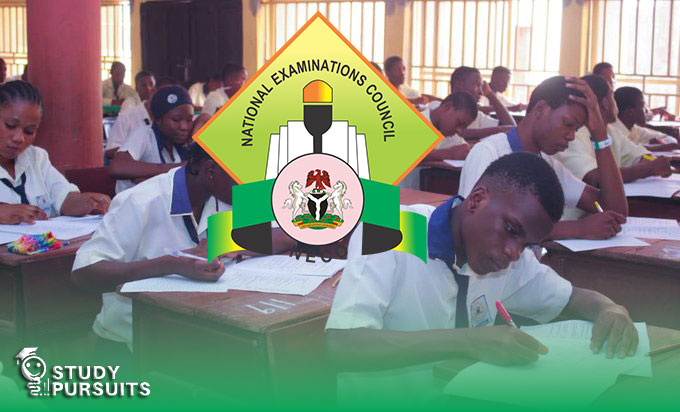NECO 2025/2026 Specimen for Chemistry Practical: Key Items; The NECO Chemistry practical exam is an important part of your final exams. It helps you show how well you understand Chemistry and how you can apply the knowledge you have learned in the classroom. One of the best ways to prepare for this exam is by studying the NECO specimen list. The specimen list gives you a clear idea of what items you will need to know and work with during your practical exam.
In this article, we will take a look at the NECO 2025/2026 specimen list for Chemistry practicals, discussing the key items you need to study and understand before the exam.
What is a NECO Chemistry Specimen List?
Before we get into the key items, let’s understand what the NECO Chemistry specimen list is. The specimen list is a list of all the materials, chemicals, tools, and instruments that you will use or study during your Chemistry practical exam. It is important because it tells you exactly what to expect during the exam. By knowing these items in advance, you can prepare better and perform well in the practical exam.
The specimen list can include:
- Chemicals: These are the substances you will use in your experiments.
- Apparatus: These are the tools and instruments like test tubes, Bunsen burners, etc.
- Techniques: These are the methods you will use to carry out the practical experiments.
Let’s now dive into the key items that are often included in the NECO 2025/2026 specimen list for Chemistry practicals.
READ ALSO: NECO Specimen FAQs: Answers to Common Questions.
1. Common Chemicals in NECO Chemistry Practical
Chemicals are a big part of the Chemistry practical exam. You will work with various chemicals, and it is essential to know what they are and how to handle them. Some common chemicals that you may find on the NECO Chemistry specimen list include:
a. Acids and Bases
- Hydrochloric Acid (HCl)
- Sulfuric Acid (H2SO4)
- Sodium Hydroxide (NaOH)
- Ammonia Solution (NH3)
These chemicals are commonly used in titration experiments, neutralization reactions, and other practicals. You should know how to handle them carefully because they can be harmful.
b. Salts
- Sodium Chloride (NaCl)
- Copper Sulfate (CuSO4)
- Zinc Sulfate (ZnSO4)
Salts are used in various experiments, such as preparing solutions or testing for certain properties of compounds.
c. Indicators
- Phenolphthalein: Used to test for the presence of acids and bases.
- Methyl Orange: Another indicator used in titrations.
You should be familiar with these indicators and know how they react in different solutions.
2. Apparatus You Need to Know
In addition to chemicals, there are many different pieces of apparatus that you will need to understand and use during your Chemistry practicals. Here are some of the key items you might find on the specimen list:
a. Beakers and Flasks
- Conical Flask
- Graduated Cylinder
- Burette
These are used to measure liquids and carry out reactions. You should know how to use them correctly and how to read measurements accurately.
b. Test Tubes and Holders
Test tubes are used to hold small amounts of liquids or solids for testing. Test tube holders are used to safely hold the test tubes when they are being heated.
c. Bunsen Burner
A Bunsen burner is a tool used to heat substances during experiments. It is important to know how to adjust the flame and use the burner safely.
d. Pipettes and Droppers
These are used to measure and transfer small amounts of liquids accurately. You should practice using them, as accuracy is important in Chemistry practicals.
e. Balance
A balance is used to measure the mass of solid substances. You may need to use it when preparing a solution or carrying out other experiments.
3. Key Techniques to Understand
In Chemistry practical exams, your ability to perform experiments correctly is just as important as knowing the chemicals and apparatus. Here are some key techniques that you will likely need to know:
a. Titration
Titration is a process used to determine the concentration of a solution. It involves slowly adding a solution of known concentration to a solution of unknown concentration until the reaction is complete. You will need to know how to set up a titration using a burette, conical flask, and indicator.
b. Filtration
Filtration is used to separate solid substances from liquids. You may need to filter a solution to remove impurities or collect a precipitate. Understanding how to set up a filtration system using filter paper and a funnel is important.
c. Evaporation and Crystallization
These techniques are used to separate a solid from a liquid in a solution. You will need to understand how to evaporate the solvent, leaving behind solid crystals.
d. Heating Substances
Many Chemistry practicals involve heating substances. Whether it’s heating a solid, liquid, or a mixture, you must understand how to safely heat substances using a Bunsen burner or other heat sources.
4. Preparing for NECO Chemistry Practical Exam
Now that you know what items to expect in the NECO Chemistry practical exam, it’s time to focus on how to prepare for it. Here are some tips to help you get ready:
a. Practice with the Apparatus
If you have access to a Chemistry lab, practice using the apparatus and chemicals you will likely use during the exam. The more familiar you are with the tools, the easier the exam will be. Make sure you know how to use the balance, burette, pipette, and other tools correctly.
b. Review Key Experiments
Look at past NECO Chemistry practical exams to identify common experiments that are likely to appear in your 2025/2026 exam. Practice those experiments, including titration, filtration, and heating methods, to get comfortable with them.
c. Understand Safety Procedures
Always remember that safety is very important in Chemistry practicals. Study the safety guidelines for handling chemicals and using the equipment. Always wear safety goggles, gloves, and a lab coat during practical sessions. Learn how to deal with spills, burns, and other accidents that may happen during experiments.
d. Know the Chemical Reactions
Understand the reactions that may happen when you mix different chemicals. You should also know the color changes that might occur when you use indicators like phenolphthalein or methyl orange.
5. Where to Find the NECO 2025/2026 Chemistry Specimen List
The NECO specimen list is usually made available by the National Examinations Council (NECO). To get the specimen list for 2025/2026 Chemistry practicals, you can check the following sources:
- NECO Official Website: The official NECO website often provides specimen lists and other exam-related materials.
- Your School: Your teachers or school administrators will likely provide the specimen list to help students prepare.
- Online Forums: Some online student communities and forums might share the specimen list.
- Study Groups: Join or form study groups with your classmates to share materials like specimen lists.
Conclusion
The NECO 2025/2026 Chemistry practical exam is an important part of your final exam. By understanding the key items on the specimen list—such as chemicals, apparatus, and techniques—you can prepare better and perform well in the exam. Make sure to practice with the tools and chemicals you will use, understand the experiments and techniques, and always follow safety guidelines. With the right preparation, you will be ready to ace your NECO Chemistry practical exam.
READ ALSO: NECO Physics 2025/2026 Specimen: How to Practice Effectively

